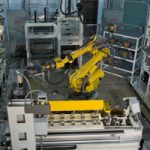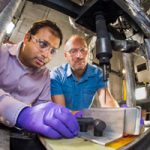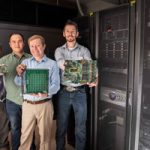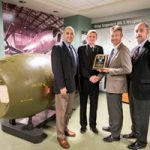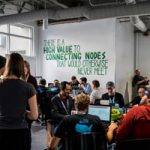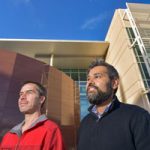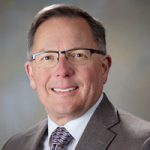Robotics system demilitarizes 700,000 Army submunitions
More than 700,000 Multiple Launch Rocket System submunitions have been demilitarized since the Army started using an automated, nine-robot system conceptualized, built and programmed by Sandia engineers.
Extreme fast-charging batteries
A key roadblock to widespread use of long-range electric vehicles — the longer time needed for a complete recharge compared to a gas station fill-up — may soon be overcome, thanks to DOE support for extreme fast-charging battery research. Fueled by a $1.5 million award from DOE’s Vehicle Technology Office, Sandia and the University of Michigan have teamed up to develop engineered battery materials that can be charged in less than 10 minutes.
Sandia spiking tool improves artificially intelligent devices
Whetstone, a software tool that sharpens the output of artificial neurons, has enabled neural computer networks to process information up to a hundred times more efficiently than the current industry standard. The software, created by Sandia neuroscientists, greatly reduces the amount of circuitry needed to perform autonomous tasks and is expected to increase the penetration of artificial intelligence into numerous markets.
Vice Admiral Johnny Wolfe visits Sandia
Vice Admiral Johnny Wolfe, director of Strategic Systems Programs for the Navy, visited Sandia last week and formally recognized Sandia and its staff for their key role in the development and production of the W76-1/Mk4A Life Extension Program.
Creating the Future
Experts inside and outside the Labs have spent the last 15 months examining complex questions in an effort to develop Sandia's new Creating the Future strategic direction document, and Labs-level strategic priorities.
Sandia staff engages in cyber wargames with college students
More than 60 colleges and universities competed to defend fictional energy systems from pretended hackers at DOE’s annual CyberForce Competition last month. Sandia served as a host for the first time, and organized in Albuquerque one of seven simultaneous, regional competitions across the country.
Quantum computing steps further ahead with new Labs projects
Quantum computing is a term that periodically flashes across the media sky like heat lightning in the desert: brilliant, attention-getting and then vanishing from the public’s mind with no apparent aftereffects. Yet a multimillion-dollar international effort to build quantum computers is hardly going away. Now, three new Sandia projects (and a fourth a year underway) aim to bring the wiggly subject into steady illumination.
‘Friendly’ EMP improves survival for electronics
An EMP emitted by a nuclear weapon exploded high above the U.S. could disable the electronic circuits of many devices vital to military defense and modern living. Fortunately, military equipment is designed to be immune to various levels of EMP, and the validity of those designs has been tested and improved by a “friendly” EMP generator at Sandia.
Larry Luna elected American Society of Mechanical Engineers fellow
Sandia engineer Larry Luna has been elected a fellow of the American Society of Mechanical Engineers for significant achievements during more than 30 years of service and leadership. ASME fellows constitute about 3.5 percent of the organization’s more than 95,000 members. Larry was specifically recognized “for his contributions to the national security of the United States,” according to ASME.
Wind tunnel and lasers give nation a hypersonic proving ground
Sandia's hypersonic wind tunnel and advanced laser diagnostic technology are helping U.S. defense agencies understand the physics associated with aircraft flying five times faster than the speed of sound. With potential adversaries reporting successes in their own programs to develop aircraft that can be flown at Mach 5 or greater, U.S. development of autonomous hypersonic systems is a top defense priority.
